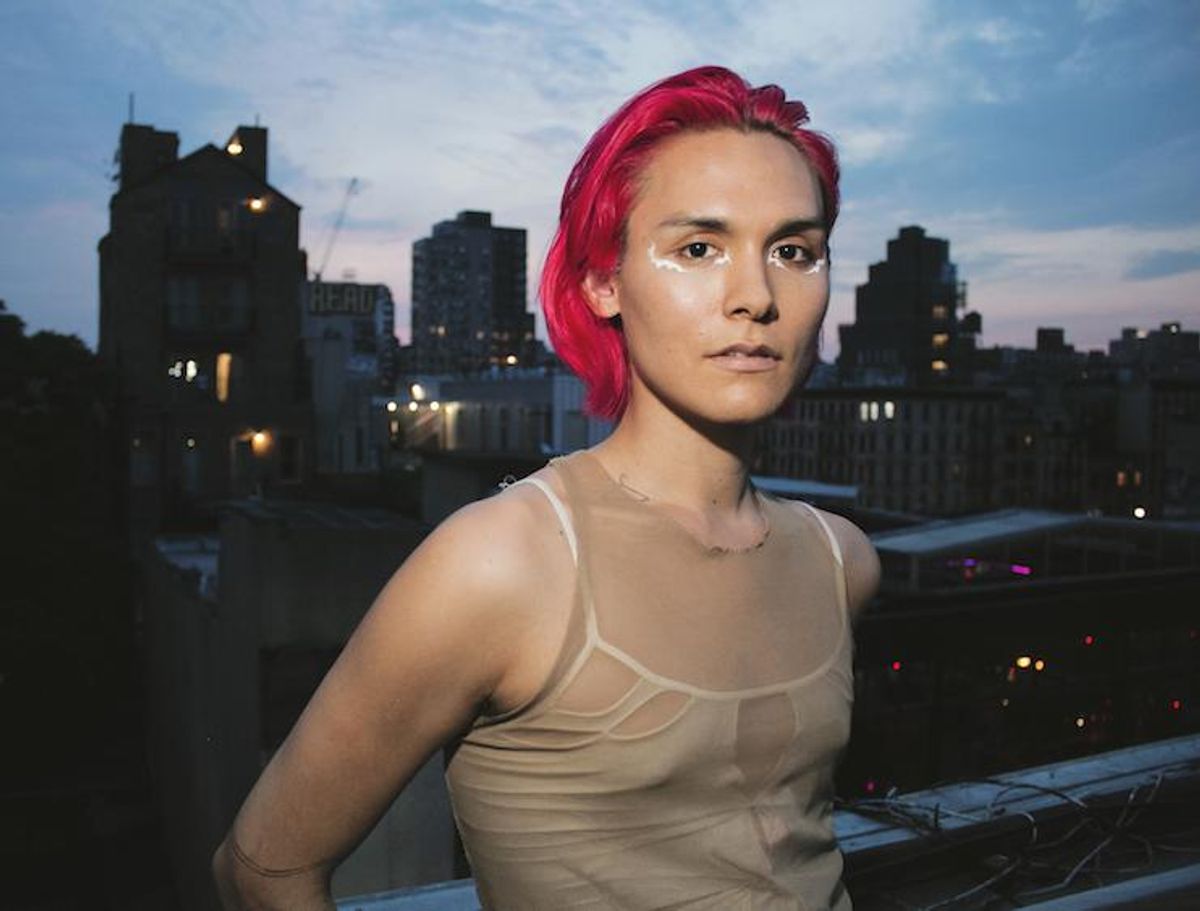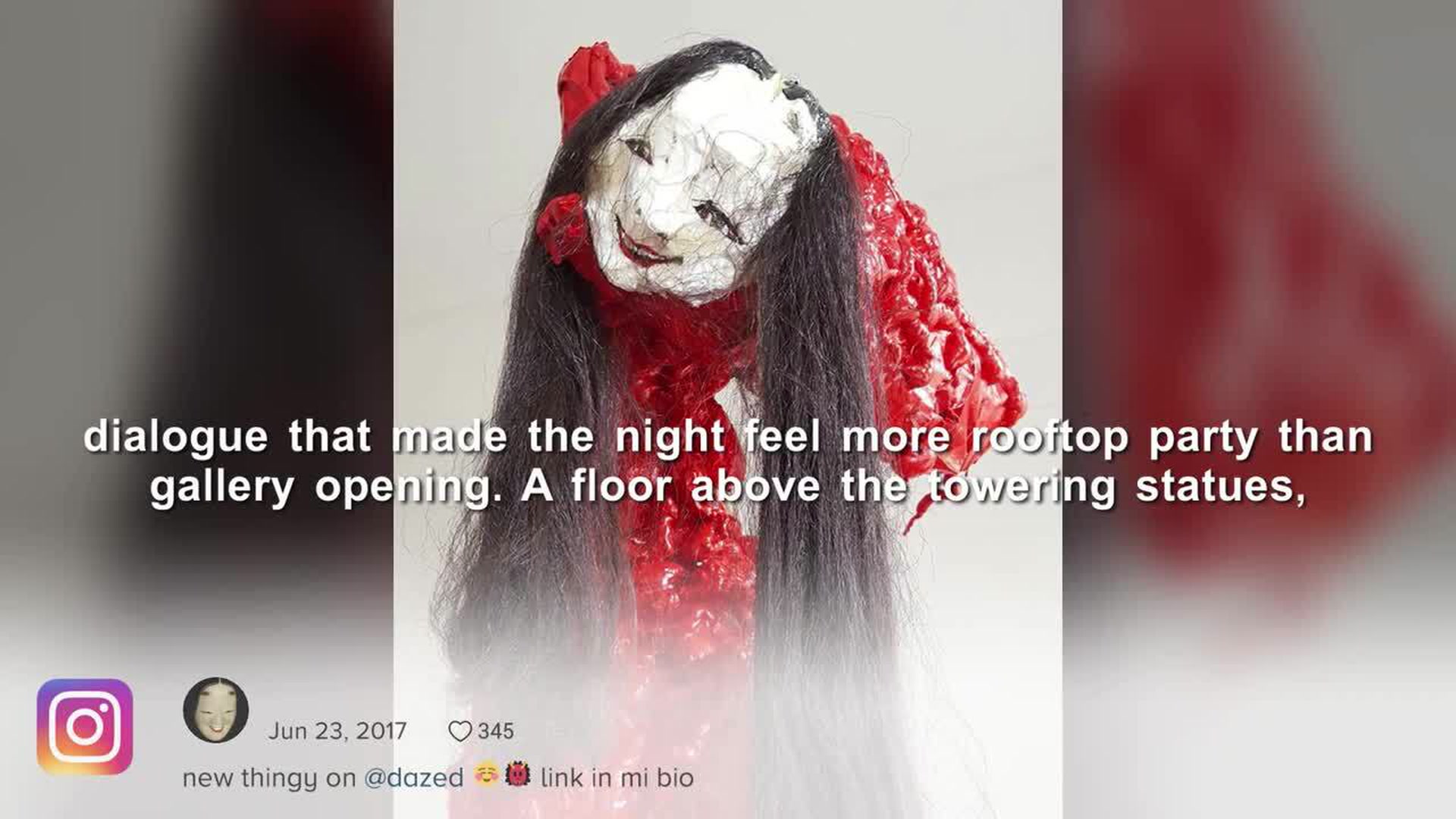On the sweltering top floor of a Lower East Side building, a mass of grotesque bodies towered in a circle. Thongs--twisting and contorting like spider webs--seemed to hold together the mannequins' splintered guts, while their faces screamed out in silent agony. Paired with paintings that mirrored the bodies at the center of the room, the scene at Manhattan's Romeo Gallery was striking and thought-provoking--not only because of the two delicately placed tuna cans propping up one of the statues.
Related | Gogo Graham's Fall '17 Lookbook Stars Transgender Model Cecilia Gentili
For one night only, transgender artist and designer Gogo Graham presented Dragon Lady, a sculptural exhibition targeting the harmful stereotypes associated with the exotified western term--one that mindlessly boxes East Asian women into "strong, deceitful" archetypes. Days before guests stepped off the elevator and began to interact with Graham's art, the event was announced online with an ominous quote from her friend and collaborator, Aran.
"In keeping with dragon tradition, the obliterated heart and bones shall be expelled. Watch how the white creeps, froths and screams; red of digestive center, red fluorescent demon. Just like a dragon, exactly like a dragon! Just like a dragon, and you're such succulent trash in the ignition of her dream."
Aran, who comes from a multiracial background like Graham, helped pen the press release after viewing the art and listening to Graham's piercing, video game-inspired score, which includes snippets of everything from Final Fantasy and Square Enix games to Gagaku court music.
As the eclectic soundtrack set the stage for her exhibition, the audience filed in with beers in hand. Like with most of Graham's work, Dragon Lady fostered dialogue that made the night feel more rooftop party than gallery opening. A floor above the towering statues Graham had erected to reject stereotypes, dozens of creatives, who'd come to support her, found friendship and family in the rooftop safe space her art had created.
OUT caught up with the burgeoning New York designer to discuss exotification, tuna fish, and identity.

Photography: James Emmerman
OUT: The concept behind the show is the stereotype of a "Dragon Lady." How did the sculptures represent your pushback against this exotification of your identity?
Gogo Graham: It's kind of becoming common knowledge that cis white men can and often do interact with their PoC partners in a way that causes their partners to feel exoticized and fetishized for their race. While this is obviously oppressive specifically for those, like me, who have been called a dragon lady without self-identifying as such, I think it's important to constantly remind oneself that this kind of "pushback" only addresses a specific sector of oppression within a larger structure of white supremacist heteropatriarchy that is most detrimental to black trans/GNC femmes.
Related | Gallery: Gogo Graham's Dragon Lady Exhibition
Where did you get the materials for the mannequins?
I picked up most of the materials from the hardware store; electrical wire, dry wall composite, window sealant and furniture wrap were all major components. Although the sculptures have a feeling of looking thrown together, I actually spent most of my time planning for the most efficient construction, delivery, setup and cleanup of everything. I tend to be very practical when it comes to my work.

Photography: James Emmerman
What inspired their construction?
I wanted them to be large and grotesque because that's how I imagine my elevated self a lot of the time, so they were sort of representational and pretty straight forward in that way.
Tell me a bit about the juxtaposition between their tortured, contorted faces and the thongs they have strapped onto them.
I like to try to keep it cute even when I feel like a gross monster by dressing the way I want to. Bright colors, bikinis, thongs--they all are components of a way of dressing that make me feel good in my body. The shapes of the bodies were intended to convey my interaction with normative and horrific femme archetypes that exist within Japanese folklore, as well as Kabuki and Noh performance that appear to be focal points for Japanese-obsessed white westerners.
The commonly appropriated image of the hannya, for example, is one of a demonic, horrific, desperate femme who has been transformed by grief into a monstrous villain. I don't necessarily see thongs and monstrous features in juxtaposition; I believe they exist within the same spectrum of physical presentation.

Photography: James Emmerman
Does the tuna fish have deeper meaning or is it literally just for stabilization?
Sorry to disappoint, but this was pretty much the only moment of improvisation in my studio that remained for the show! Nothing else with the same hardness and density would hold the massive flower up without disturbing the overall balance/look of the sculpture. The impact appears to have been different than the intention in this case with viewers speculating and projecting a lot of different things onto these components of the sculpture. The cans were the stars of the show, it seems!
Is there another stereotype you hope to explore in a later gallery?
Aside from wanting to branch out into other media, I wanted to make a point about not doing any kind of fashion until I'm able to pay my models. It's important for us to begin to contextualize inclusion and diversity with distribution of capital, it basically means nothing to include everyone if you don't pay them for their labor, and I'm trying to make that a priority with my work. That being said, I'll likely be exploring other facets of my own identity in the future.




























































































